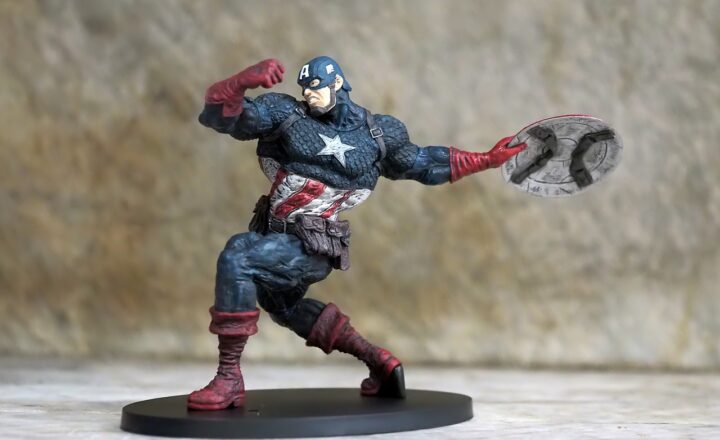Exploring Alternate Universes in Comics: A Guide to Multiverse Storylines
November 14, 2024

Comic books have fascinated audiences for decades, offering vivid worlds filled with heroes and villains, each with their own set of rules and realities. One of the most intriguing concepts within this medium is the idea of the multiverse—an expansive collection of alternate universes that can alter narrative direction and character development in fascinating ways. This article serves as your guide to understanding multiverse storylines in comics, highlighting key stories, characters, and the impact of these alternate realities on the wider comic book landscape.
1. What is a Multiverse?
The term “multiverse” refers to the hypothetical existence of multiple universes, each with its distinct laws of physics and variations of characters and events. In comics, the multiverse allows writers to explore different narratives without altering the core continuity of characters from their original storylines. Rather than being bound to a single linear storyline, comic book publishers can create diverse interpretations and situations for beloved heroes and villains.
The multiverse in comics permits experimental storytelling, where the same character can undergo different journeys based on the universe they inhabit. This flexibility has solidified the multiverse as a staple in comic book narratives—from superhero sagas to indie explorations.
2. A Brief History of the Multiverse in Comics
The concept of the multiverse was first popularized in the 1960s, with notable examples including:
- DC Comics Multiverse (1961): Introduced in “Flash of Two Worlds,” this pivotal story featured the Golden Age Flash, Jay Garrick, and the Silver Age Flash, Barry Allen. This tale not only merged two timelines but laid the groundwork for establishing parallel universes within DC’s storytelling framework.
- Marvel Comics Multiverse (1961): The Marvel Universe began to explore its parallel realities with stories such as “Tales of the Watcher” and later introduced the “What If…?” series, taking popular characters and placing them in alternate scenarios to explore how slight changes in history could lead to vastly different outcomes.
- The Rise of the Multiverse (2000s): The multiverse grew in complexity with events like DC’s “Infinite Crisis” and Marvel’s “Secret Wars,” pushing the boundaries of storytelling and exploring the consequences of different timelines colliding or intertwining.
These landmark stories are crucial developments in the multiverse concept and sparked a transformative era for comic book narratives.
3. Key Multiverse Storylines to Explore
To better understand and appreciate the multiverse, let’s delve into some iconic multiverse storylines:
- DC’s “Crisis on Infinite Earths” (1985-1986): A landmark event that sought to merge the many Earths of the DC Multiverse into one unified universe. This story reshaped the entire DC roster and amplified the stakes of superhero narratives, making it a must-read for any comic book fan.
- Marvel’s “Infinity Crisis” (1970s): A series of interconnected stories showcasing the cosmic dangers that threaten realities and protagonists working together across dimensions to prevent catastrophic collapse. This emphasis on team dynamics and complex storytelling has remained relevant in multi-franchise comic narratives.
- “House of M” (2005): In this Marvel storyline, the mutant Scarlet Witch alters reality, creating an alternate universe where mutants dominate. This storyline is notable for its exploration of identity, power, and consequence, setting precedence for tales that question the morality of power.
- “Spider-Verse” (2014): Marvel expands on the idea of a multiverse by introducing different versions of Spider-Man from alternate realities. This storyline showcases the vast potential of multiverse storytelling by emphasizing shared themes and characters despite vastly different circumstances and character designs.
- DC’s “Dark Nights: Metal” (2017): An event that merges horror with superhero comics, introducing the concept of the Dark Multiverse, where twisted versions of beloved heroes and villains reside. This series highlights the darker aspects of alternate realities and the implications of choice.
These storylines elegantly showcase the array of creative possibilities inherent in multiversal narratives.
4. The Implications of the Multiverse on Character Development
Multiverse storylines often lead to significant character growth and development. By interacting with their alternate selves, characters confront their fears, insecurities, and desires, allowing them unprecedented opportunities for growth. A key example is:
- Spider-Man: Into the Spider-Verse (2018): This animated feature demonstrates how different versions of Spider-Man learn from one another, emphasizing the importance of teamwork, individual strengths, and the shared responsibility of heroism. It creates an engaging character development arc for Peter Parker and Miles Morales, illustrating how they learn from their unique experiences across different realities.
The multiverse provides fertile ground for exploring complex character arcs and circumstances that provoke deeper questions about identity and consequence.
5. The Future of Multiverse Storylines in Comics
The multiverse concept remains a growing trend in comics, aligning with broader cultural interests in alternate realities, speculative fiction, and the intersection of technology and storytelling. As digital media evolves, the potential for interactive storytelling platforms offers new ways for audiences to engage with multiverse narratives.
Coming in the future:
- Cinematic Expansions: With the success of the Marvel Cinematic Universe and DC Extended Universe exploring multiverse concepts, expect more high-stakes adaptations that reflect the diversity and complexity of comic book storylines on the big screen.
- Transmedia Storytelling: Companies may leverage video games, graphic novels, and live-action series to create integrated multiverse narratives that involve fans in the storytelling experience.
- Continued Character Development: As new writers and artists breathe life into old characters, the exploration of multiverses will provide innovative angles for character arcs, allowing readers to continually engage with familiar faces in unfamiliar settings.
In summary, the future of multiverse storytelling in comics looks promising, filled with infinite possibilities that continue to inspire both creators and fans alike.
Conclusion
The multiverse concept has transcended time, becoming a cornerstone of comic book literature, engaging audiences worldwide. By comprehensively exploring alternate universes, characters evolve, stories develop, and fans gain new perspectives. Whether you’re a dedicated reader or a curious newcomer, diving into multiverse storylines opens a gateway to expansive adventures that redefine the meaning of heroism in the comic universe.
So grab your favorite comic and start your journey through the multiverse because the stories are infinite, and the truths you uncover may change your perspective forever.







